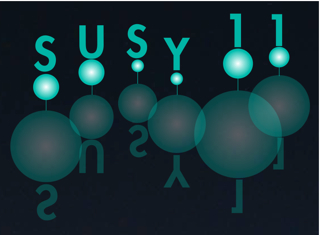Conveners
Parallel Session 5: B - Dark matter
- Matthew Buckley (Fermilab)
Parallel Session 5: E - Higgs
- John Conway ()
Parallel Session 5: A - SUSY pheno
- Stefania Gori (University of Chicago)
Parallel Session 5: D - Alternatives
- Roni Harnik (FNAL)
Parallel Session 5: H - Altern. exp
- Stephen Mrenna (Fermilab)
Parallel Session 5: C - SUSY LHC experiment
- Robin Erbacher ()
Prof.
Zackaria Chacko
30/08/2011, 11:15
I consider theories where dark matter carries flavor quantum
numbers, and couples to the Standard Model through renormalizable
interactions. The focus is on the implications of this class of models for direct detection and collider experiments.
Dr
Michael Flowerdew
(MPP Munich)
30/08/2011, 11:15
Dr
Sven Heinemeyer
(IFCA (CSIC, Santander))
30/08/2011, 11:15
SUSY: phenomenology
The LHC is actively searching for SUSY particles or other signs
of Supersymmetry. We briefly discuss the interpretation of these searches in certian benchmark models and how the limits might be weakened. The searches have an impact on SUSY fits, and we briefly compare pre-LHC
and post-LHC results as well as the need for more flexible benchmarks in the
future. Finally we discuss the impact...
Brian Batell
(Perimeter Institute)
30/08/2011, 11:45
We consider theories of flavored dark matter, in which the dark matter particle is part of a multiplet transforming nontrivially under the flavor group of the Standard Model in a manner consistent with the principle of Minimal Flavor Violation (MFV). MFV automatically leads to the stability of the lightest state for a large number of flavor multiplets. If neutral, this particle is an excellent...
Kenneth Moats
(Carleton University)
30/08/2011, 11:45
Traditional Little Higgs models suffer from two generic problems. The first is that it is difficult to generate a Higgs quartic coupling without violating custodial symmetry and the second is the existence of fine-tuning in the top sector. These problems are solved in the Bestest Little Higgs model, which is based on an SO(6)xSO(6)/SO(6) coset space with a built-in custodial symmetry. A...
Ben O'Leary
(Julius-Maximilians-University Wuerzburg)
30/08/2011, 11:45
I present an investigation (arXiv:1102.4693 [hep-ph]) into the implications for supersymmetry from an assumed absence of any signal in the first period of LHC data taking at 7 TeV center-of-mass energy and with 1 to 7 fb^(-1) of integrated luminosity. The zero-lepton plus four jets and missing transverse energy signature is considered, and I will present a combined fit of low-energy...
Satish Desai
30/08/2011, 11:55
Jovan Mitrevski
30/08/2011, 12:05
Dr
Jennifer Kile
(Northwestern U)
30/08/2011, 12:10
We consider the possibility that dark matter and Standard Model flavor are related. We take dark matter to belong to a dark sector which contains at least two types of particles. We then identify these as different "flavors" in the dark sector, and then hypothesize that the dark sector and the SM share a common flavor interaction. As interaction eigenstates and mass eigenstates need not...
Dr
Anna Kulesza
(RWTH Aachen University)
30/08/2011, 12:10
Predictions for squark and gluino total production cross sections are one of the important theory ingredients for determining
SUSY mass exclusion limits or, in case of discovery, masses and properties of sparticles. In this talk, I will present results of
calculations of higher-order QCD corrections to all processes
of squark and gluino production relevant at hadron colliders....
Dr
Lidija Zivkovic
(Brown University)
30/08/2011, 12:10
Jon Wilson
(The Ohio State University)
30/08/2011, 12:15
398.
A Search for Supersymmetry Using Events with Photons and Large Missing Transverse Energy at CMS
Ms
Rachel Yohay
(University of Virginia)
30/08/2011, 12:30
Dr
Ricky Fok
(Univ. of Oregon)
30/08/2011, 12:35
We calculate the two-body decay rates of "quirkonium" states formed from quirks that acquire mass solely through electroweak symmetry breaking. We consider SU(N)_ic infracolor with two flavors of quirks transforming under the electroweak group (but not QCD) of the Standard Model. In one case, the quirks are in a chiral representation of the electroweak group, while in the other case, a...
Ms
Ruchika Nayyar
(Phd Student)
30/08/2011, 12:35
